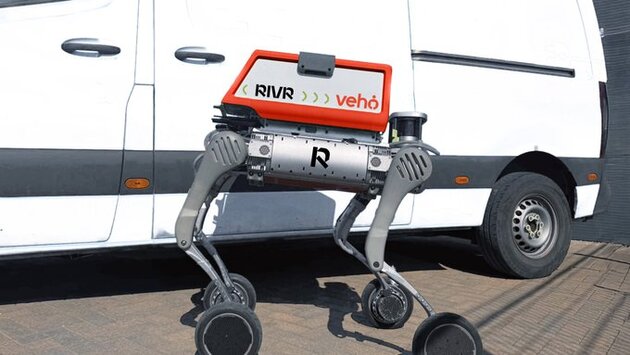
Can delivery robots solve the last-100-yards challenge? That’s the question many consumers and businesses are asking as online shopping volumes soar. For Veho, a delivery logistics provider, and Rivr, a Zurich-based robotics innovator, the answer might just lie in their latest collaboration: testing dog-like delivery robots in Austin. This pilot program aims to crack the notoriously tricky “last-100-yards” of delivery—the crucial stretch from the delivery van to the customer’s doorstep.
Unlike traditional last-mile delivery solutions, which typically end at the curb, Rivr’s advanced four-wheeled, stair-climbing robot—described by founder and CEO Marko Bjelonic as “a dog on roller skates”—promises to navigate complex urban environments with ease. Starting this week in Austin, the robot will ferry parcels directly from Veho’s delivery vans to front doors, tackling staircases, narrow walkways, and other delivery obstacles that have long been a barrier for automation.
The program, while small-scale for now, is a strategic step for both companies. Veho, known for working with top brands like Sephora, Saks, and HelloFresh, wants to optimize delivery operations, especially in dense urban areas where efficiency is key. By testing this robotic solution, Veho hopes to increase delivery capacity and reduce costs—two factors that directly impact e-commerce profitability and customer satisfaction.
Meanwhile, Rivr gains a valuable opportunity to gather critical real-world data to fuel its general physical AI framework. “Unlike ChatGPT or autonomous vehicles, which have vast training datasets, robots need real-world experience to learn,” explains Bjelonic. “This partnership lets us solve meaningful problems while building the data foundation that will make our robots smarter and more adaptable.”
The pilot involves a single robot working five- to six-hour shifts, covering a variety of Austin neighborhoods. Though its movements are currently monitored by human supervisors, the long-term vision is a seamless delivery process where robots and human drivers work side-by-side to maximize efficiency. High-value delivery sectors—including luxury goods, fresh food, and subscription boxes—are particularly poised to benefit from this innovation.
For consumers, this could mean faster, more reliable deliveries, even in hard-to-reach locations. For businesses, the potential cost savings and scalability of robotic last-yard delivery open doors to higher profit margins and a competitive edge in the crowded logistics market.
As delivery volumes continue to rise, solving the last-100-yards challenge with robotic innovation could become the new gold standard for logistics providers, retailers, and e-commerce giants. Expect to see more partnerships like Veho and Rivr’s as the industry races to optimize delivery efficiency and customer experience in an increasingly on-demand world.
𝗦𝗲𝗺𝗮𝘀𝗼𝗰𝗶𝗮𝗹 𝗶𝘀 𝘄𝗵𝗲𝗿𝗲 𝗿𝗲𝗮𝗹 𝗽𝗲𝗼𝗽𝗹𝗲 𝗰𝗼𝗻𝗻𝗲𝗰𝘁, 𝗴𝗿𝗼𝘄, 𝗮𝗻𝗱 𝗯𝗲𝗹𝗼𝗻𝗴. We’re more than just a social platform — from jobs and blogs to events and daily chats, we bring people and ideas together in one simple, meaningful space.